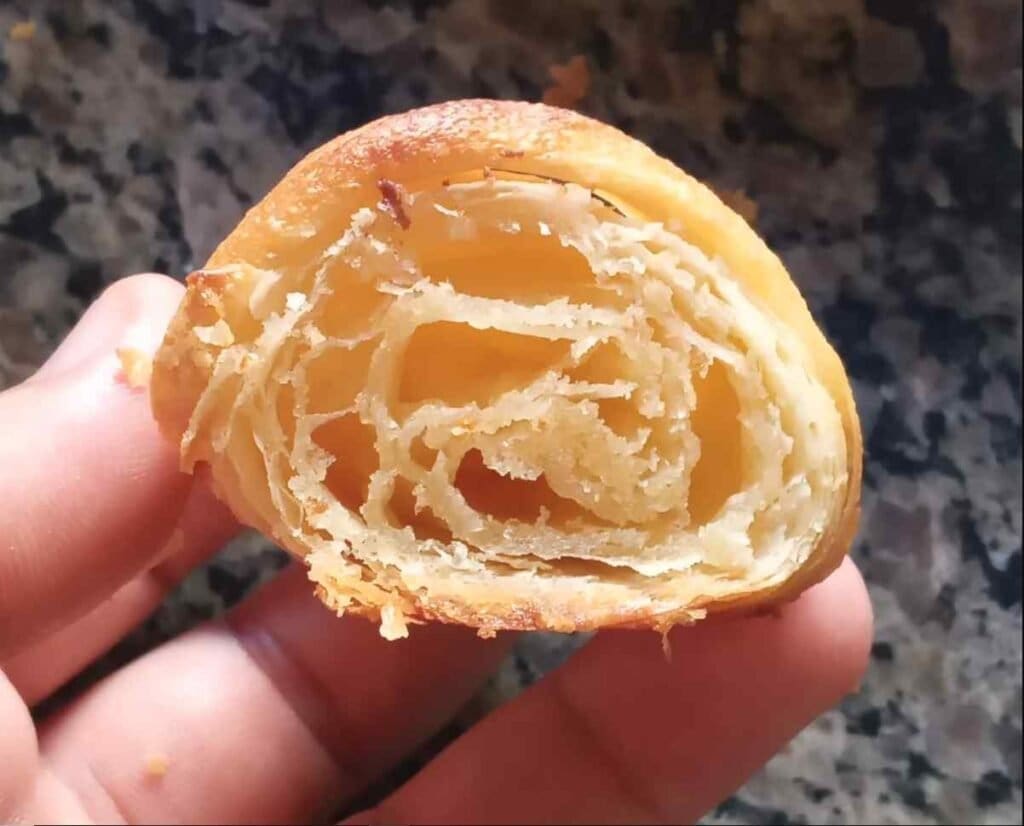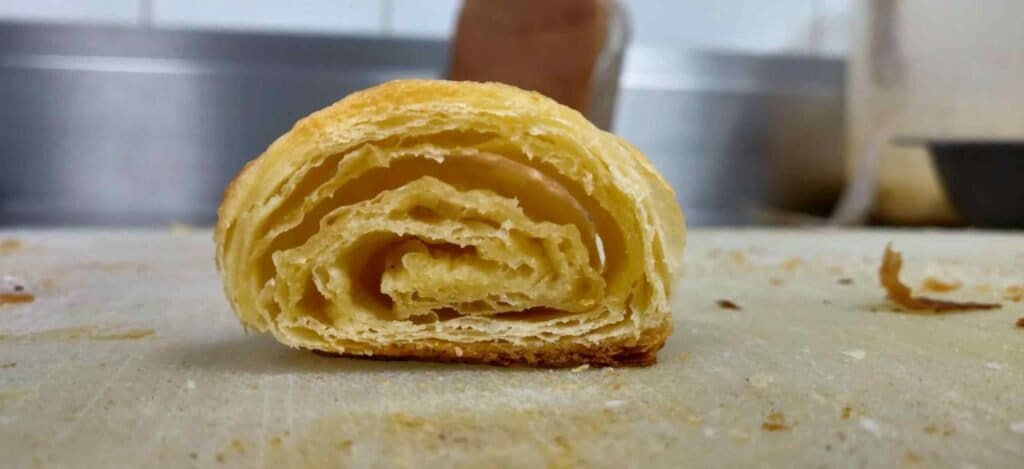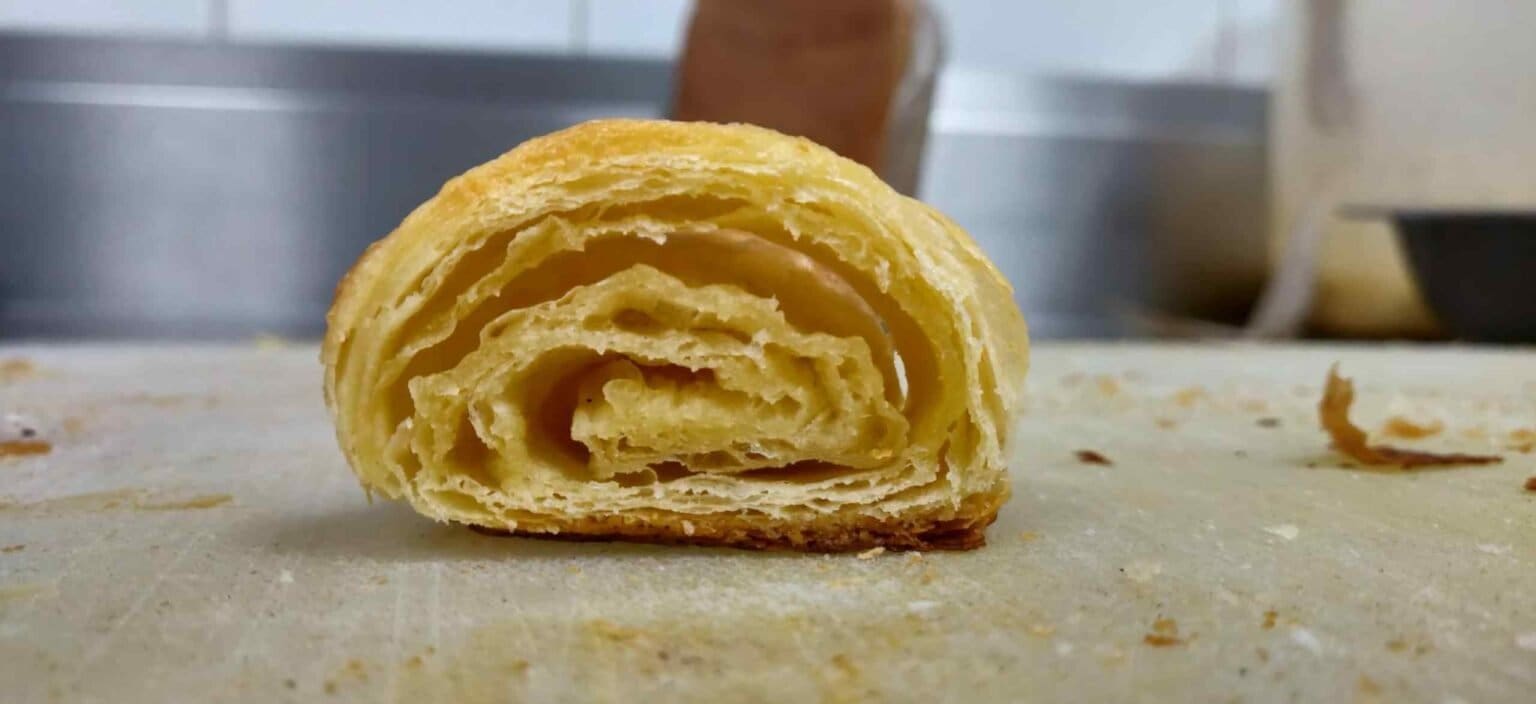Pulling an undercooked croissant from the oven can deflate the spirits of any home baker. Yet, with a bit of know-how, transforming this pastry mishap into a delightful treat is simpler than you might think.
I’ve honed a technique that rescues these buttery delights, ensuring they still take center stage at your table. What’s the secret? Well, let’s just say, your kitchen is about to smell irresistible again.
To salvage an undercooked croissant, preheat your oven to the recipe’s recommended temperature. Gently slice the croissant open lengthwise with a serrated knife to expose the inner layers. Place it cut-side up on a baking sheet and return to the oven. Bake until the croissant achieves a golden-brown color and flaky texture, ensuring it’s cooked through
What Causes Undercooked Croissants

When you’re baking croissants, achieving that perfect, flaky texture is key. However, sometimes you may find that your croissants come out undercooked. Let’s go over some common factors that can lead to this undesired outcome.
Oven temperature: It’s crucial to preheat your oven to the right temperature. If the oven isn’t hot enough, your croissants might not bake thoroughly.
- Proofing process: Croissants need adequate time to rise. If the dough hasn’t risen enough before baking, it can result in a dense and undercooked middle. To avoid this, give the dough plenty of time to proof and expand.
- Baking time: Each step of the baking process is essential. If you remove the croissants from the oven too early, they won’t have had enough time to cook all the way through.
- Dough layering: Proper dough layering creates air pockets that lead to a flaky texture. If the layers are compressed or uneven, this may affect how the heat distributes through your pastry, possibly leaving some parts underbaked.
Visual Inspection:
- Check the color: A well-baked croissant should have a golden brown color.
- Feel the texture: It should feel light and airy, not doughy or dense.
If you do encounter undercooked croissants, there are ways to fix them. Adjusting the oven temperature and allowing additional baking time can help you salvage the batch.
Remember, baking is as much a science as it is an art. So, keep an eye on those details, and with practice, you’ll be creating perfect croissants in no time.
Is It Safe to Eat Undercooked Croissants?

When you’re eagerly anticipating biting into a buttery, flaky croissant and you’re met with a doughy center, you might wonder if it’s still okay to eat.
Safety first: eating undercooked dough made with flour could expose you to harmful bacteria like E. coli. Unbaked dough also presents a risk of salmonella if it contains raw eggs.
Check the Texture: When the croissant is lightly golden yet appears undercooked within, it’s probably not safe. A croissant is fully baked when it has a crisp outer layer with a rich, golden-brown color. The inside should be airy, fluffy, and cooked through, not dense or gooey.
- Look: Golden brown exterior.
- Feel: Crisp outside, fluffy inside.
- Smell: Pleasantly yeasty and buttery.
What can you do with undercooked croissants besides discarding them? You can try bringing them back to life by rebaking them at a lower temperature for a few minutes. This method can help cook them through without burning the exterior.
Rebaking Tips:
- Preheat your oven to a lower temperature than the original baking instructions, about 300°F (150°C).
- Place the undercooked croissants on a baking sheet.
- Bake for a few minutes, regularly checking to ensure they don’t overcook.
Should your croissants be just slightly underdone, they may be safe to consume, especially if they’ve reached a safe internal temperature of 190°F (88°C). However, if they have a distinctly raw taste or texture, it’s best to avoid eating them and try fixing them by rebaking instead. Remember, a golden, evenly baked croissant is not just delicious but also safer for your peace of mind.
Fixing Undercooked Croissants: Step-by-Step

If your croissants came out undercooked, there’s a simple way to rescue them. You don’t have to accept doughy centers! Try this easy method to achieve the perfect bake.
- Step 1: Preheat Your Oven Warm up your oven to a moderate temperature—around 325°F (160°C) is ideal. This temp ensures your croissants can cook through without burning.
- Step 2: Prepare for Re-Baking Place your undercooked croissants onto a baking sheet. This makes it easy to handle them and helps in even reheating.
- Step 3: Heat Them Up Re-bake your croissants for around 5-10 minutes. Keep an eye on them; this will prevent the outside from getting too dark while the inside finishes cooking.
For More Details Visit: The Dough Academy
Step 4: Check the Croissants They should be golden on the outside with a flaky texture. If you sliced them before returning them to the oven, the cut side should appear slightly browned and not dough-like.
Tips:
- Use your oven light and window to monitor the progress.
- Adjust the baking time if the croissants are large or particularly doughy.
Remember, every oven is different, so these steps are a guide. Your croissants might need a little more or a little less time. Trust your instincts and look for that perfect golden color and a slightly springy feel when you tap them.
Can I Freeze Undercooked Croissants & Bake Later?

Absolutely! Freezing undercooked croissants for later baking is a practical solution for busy schedules or if you want the aroma of freshly baked croissants without starting from scratch.
Before Freezing:
- Ensure the croissants are properly shaped and have completed any required proofing.
- Place them on a baking sheet lined with parchment paper, allowing space so they don’t stick together.
Freezing Tips:
- Wrap each croissant individually in plastic wrap to ward off freezer burn and protect the delicate layers.
- For added protection, place the wrapped croissants in a heavy-duty freezer bag or airtight container.
Baking After Freezing:
- Preheat your oven to the temperature specified in the original baking instructions.
- Remove the croissants from the freezer and let them thaw slightly while your oven preheats.
- You don’t need to thaw them completely; just allow the very cold edge to come off so they can rise a bit during baking.
- Bake the croissants for the recommended time. Watch for a rich golden color and listen for a hollow sound when you tap the bottom to indicate they’re done.
By following these steps, you can enjoy the convenience of having croissants ready to bake whenever the mood strikes. And if you’re curious about freezing croissant dough, here are some helpful tips and tricks to ensure success.



